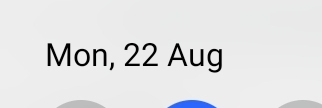
In News
- The Central Bank of India may soon exit the Prompt Corrective Action (PCA) framework of the RBI as there is an improvement in the financial health of the bank.
- The Central Bank of India is the only public sector bank under PCA right now.
About Prompt Corrective Action (PCA) framework
- Introduction:
- The RBI’s PCA Framework was introduced in 2002 as a structured early intervention mechanism along the lines of the US Federal Deposit Insurance Corporation’s PCA framework.
- Banks under this framework:
- In the past, IDBI Bank, Indian Overseas Bank and Central Bank of India were put under the PCA framework.
- The first two banks are out of PCA, while the Central Bank of India is still under the watch of the RBI.
- Objectives:
- The objective of the PCA Framework is to enable Supervisory intervention at the appropriate time and require the Supervised Entity to initiate and implement remedial measures in a timely manner, so as to restore its financial health.
- The PCA framework is also intended to act as a tool for effective market discipline.
- It refers to the central bank’s watch list of weak banks.
- PCA entails curbs on high-risk lending, setting aside more money on provisions and restrictions on management salary.
- Does not preclude the Reserve Bank of India:
- The PCA Framework does not preclude the Reserve Bank of India from taking any other action as it deems fit at any time, in addition to the corrective actions prescribed in the Framework.
- Application:
- The PCA Framework would apply to all banks operating in India including foreign banks operating through branches or subsidiaries based on breach of risk thresholds of identified indicators.
- Assessment:
- A bank will generally be placed under the PCA framework based on the Audited Annual Financial Results and the ongoing Supervisory Assessment made by RBI.
- Time period:
- RBI may impose PCA on any bank during the course of a year (including migration from one threshold to another) in case the circumstances warrant.
If a bank is under the PCA framework then there will be three risk thresholds
- Firstly, restrictions on dividend distribution/remittance of profits. Also, restrictions will be there on Promoters/Owners/ to bring in capital.
- In the second risk threshold, restrictions will be there on branch expansion; domestic and/or overseas.
- In the third risk threshold, appropriate restrictions on capital expenditure, other than for technological up-gradation within Board approved limits.
Benefits of PCA Framework
- Maintains capital: As most bank activities are funded by deposits that need to be repaid, it is imperative that a bank carries a sufficient amount of capital to continue its activities.
- Alert mechanism and a regulator: PCA is intended to help alert the regulator as well as investors and depositors if a bank is heading for trouble.
- Checks NPA: It aims to check the problem of Non-Performing Assets (NPAs) in the Indian banking sector.
- Rectify the bank’s mistakes: The aim of PCA is to rectify the bank’s mistakes before they attain crisis proportions.
- Regulation: RBI will regulate loan disbursals/ credit by PCA banks to unrated borrowers or those with high risks; however, it will not place a complete ban on the bank’s lending.
- Restoring the financial health of a bank: Basically, PCA helps RBI in restoring the financial health of a bank by monitoring key performance indicators of banks and taking corrective measures on the same.
- Strengthening the financial core of the institution: It may also stop banks from entering new lines of businesses, thereby strengthening the financial core of the institution.
Source: LM
Previous article
Uniform Code for Pharmaceutical Marketing Practices (UCPMP)
Next article
Central Bank Digital Currency (CBDC